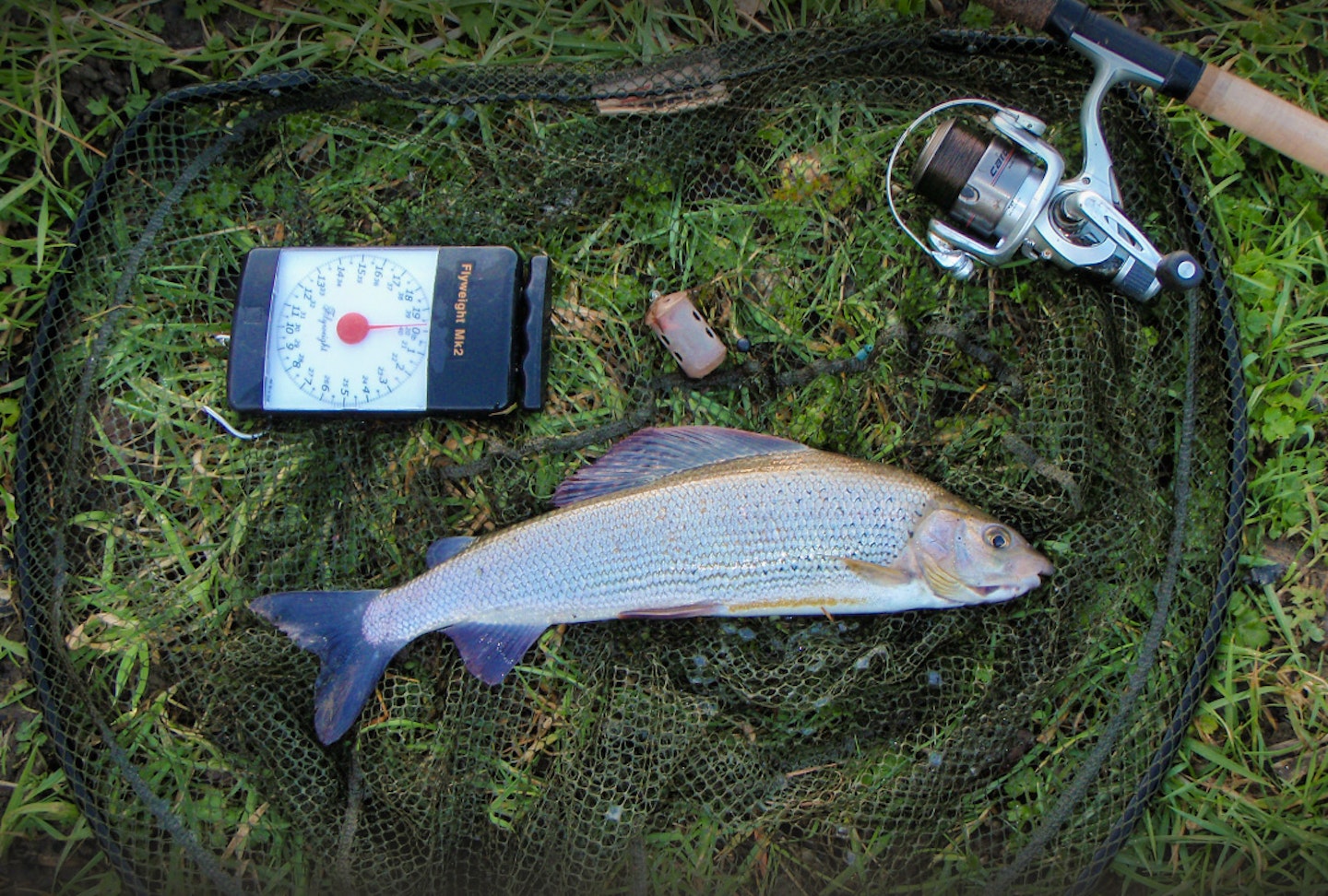Come the short days of winter with the banks hard and white with frost, few fish are as willing to feed as grayling. My favourite method of fishing for these hard-fighting beauties is with a long float rod coupled with a centrepin reel and a good supply of maggots.
This style of fishing is great fun and helps keep the cold at bay but when certain conditions prevail or when fish sit beyond reach of a normal cast, a float isn’t the best tactic. I first stumbled upon how effective the feeder can be one freezing January day while fishing a stretch of the upper River Wye in Wales...
WHETHER YOU'RE FISHING THE FLOAT OR FEEDER FOR GRAYLING, CHOOSE ONE OF THE BEST REELS FROM OUR GUIDES.

A feeder revelation
I wasn’t familiar with the stretch so I decided to walk along the bank looking to cast my red- topped chubber float into the crystal clear runs. The morning wasn’t going too well and anxiety was beginning to set in when I rounded a sharp bend and found what I was looking for – a large deep pool, with medium-paced water that looked an ideal spot to trot the float.
On the third cast the float slowly sank from view and before long a gleaming 1lb example came to the net. A few trots later another one of a similar size came placidly in but after this brief spell of action the bites stopped.
Every now and then the float would give a little dip so I knew they were still there and with only a couple of hours of daylight left I decided to try a feeder.
BROWSE OUR WHERE TO FISH GUIDE TO FIND RIVERS PACKED WITH GRAYLING NEAR YOU.

Static beats moving
A small Blackcap block-end feeder was threaded directly on to the line, then a large bead and a small swivel was tied to the end. The trace was a Drennan Carbon Feeder size 16 hook-to-nylon and two trusty red maggots were the bait.
A short swing of the rod dropped the feeder on the same line where I had trotted the float. Maybe this tactic would winkle out a fish or two but, I wasn’t ready for what happened next.
The feeder had barely settled on the gently sloping gravel bed when the long quivertip tapped before pulling sharply round. An immaculate male grayling with sail-like multi-coloured dorsal fin was soon being slipped back and I quickly refilled the feeder and cast out to the same spot.
A couple of minutes passed before the rod was wrenched round again. This time a fine grayling of 1lb 8oz was the culprit. Amazingly, a few seconds later it started to tremble before pulling round once more. Four more fish followed, the biggest 1lb 13oz.
A GOOD QUALITY FEEDER ROD IS ESSENTIAL, CHECK OUT SOME OF THE BEST IN OUR BUYER'S GUIDE.

Combat coloured water
There are other situations when a static bait appears more effective than the usual trotting. On a milder day in mid-February I arrived at the venue full of optimism only to have that hope dashed by the sight of a chocolate brown river.
Conditions like this are usually the last thing you want when grayling fishing and expectations were in my boots. A few hours later and my worries were confirmed. I switched to the feeder and decided to concentrate on a deep glide where I was sure a few grayling would dwell.
The tip only moved an inch or two but the sideways swipe of the rod met a good resistance and a stubborn fish was played carefully to the net. It was a magnificent grayling weighing 2lb 3oz. In the next hour, two more bites resulted in fish of 2lb and 1lb 8oz.
IF THE RIVER IS TOO COLOURED, BARBEL MIGHT BE WORTH TARGETING INSTEAD. READ OUR HOW TO GUIDE HERE.

Hit the far bank glides
Even in perfect trotting conditions the feeder rod is well worth bringing along. Often you will find a classic grayling glide which is frustratingly on the far bank and too far for a float to be controlled effectively. Here, a small feeder or bomb can present your bait in the right spot.
It was this sort of swim that produced my biggest grayling. The main push of the river hugged the far bank 70 metres away so I began by casting the maggot feeder every 10 minutes. The day was bright and sunny, the river low, so I wasn’t expecting to catch much until later in the afternoon. But after half an hour the tip pulled savagely round, the fish felt too big to be a grayling and I immediately suspected a chub.
From nonchalantly playing a medium-sized chub I was suddenly playing a fish of a lifetime. The enormous grayling finally slid over the net and at 3lb 4oz proved the value of a light feeder rod and fixed spool reel. I now never go fishing for grayling without a light quivertip rod.
FIND MORE SUPERB RIVER FISHING ADVICE IN OUR TIPS & TACTICS SECTION.

This page is a free example of the amazing content Angling Times Members get every single week. Becoming an Angling Times Member gives you access to award-winning magazine content, member rewards, our back issue archives, bonus content and more! Join our fishing community and find out more today!
